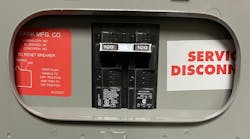Feeder conductors run between the source and the final branch-circuit OCPD [See Art. 100 definition]. The source may be a transformer, the utility, a generator, a battery, or something else that supplies electricity.
The final branch-circuit OCPD isn’t what it might appear to be at first glance. When we design branch-circuits, we do that from the load toward the source (e.g., how many lights, what size OCPD to supply that load, what size conductor to carry the load for which the OCPD is rated).
The final OCPD isn’t the 20A breaker for a given branch-circuit. It’s the 200A main breaker in that branch-circuit panel.
Between those breakers, you have the panel infrastructure. The branch-circuit conductors [Art. 100] run from the final OCPD protecting the circuit (e.g., the 20A one) and the utilization equipment that circuit’s intended for (e.g., those lights). Each branch-circuit exists to supply a particular branch-circuit load (known, assumed, or calculated). A feeder, by contrast, exists to bring supply power to a group of branch circuits. The difference in function is why the installation requirements differ between branch-circuit conductors [Art. 210] and feeder conductors [Art. 215].
In addition, you size the:
- OCPD for a branch-circuit first, then size branch-circuit conductors to carry the current the OCPD is rated for.
- Feeder conductors first (to supply the connected branch-circuits), then size the OCPD to protect those conductors.



